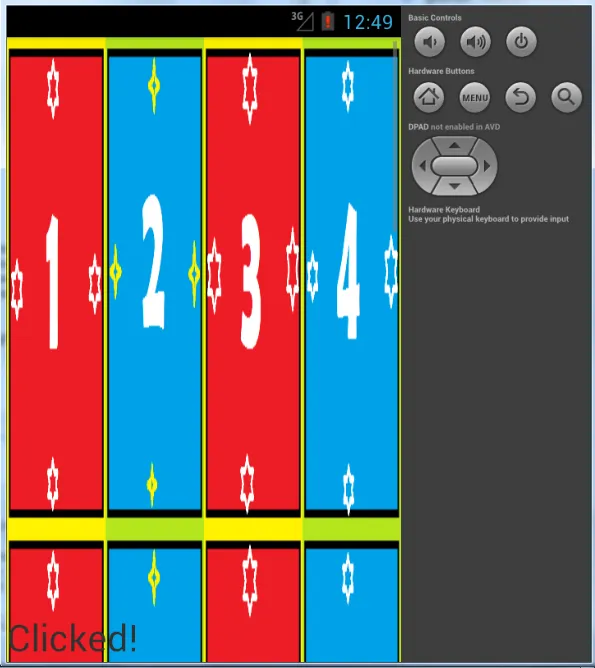如何强制 Android GridView 生成正方形单元格(单元格的高度等于单元格的宽度)?GridView 有 10 * 9 个单元格,应用程序必须支持多个屏幕!
我使用了线性布局:
row_grid.xml
<LinearLayout xmlns:android="http://schemas.android.com/apk/res/android"
xmlns:tools="http://schemas.android.com/tools"
android:layout_width="match_parent"
android:layout_height="match_parent"
android:padding="0dp" >
<ImageView
android:id="@+id/item_image"
android:layout_width="match_parent"
android:layout_height="match_parent"
android:scaleType="fitXY"
android:src="@drawable/ic_launcher" >
</ImageView>
</LinearLayout>
以及GridView: activity_main.xml
<RelativeLayout xmlns:android="http://schemas.android.com/apk/res/android"
xmlns:tools="http://schemas.android.com/tools"
android:layout_width="match_parent"
android:layout_height="match_parent"
android:background="@drawable/katy" >
<GridView
android:id="@+id/gridView1"
android:layout_width="match_parent"
android:layout_height="match_parent"
android:horizontalSpacing="0dp"
android:numColumns="4"
android:stretchMode="columnWidth"
android:verticalSpacing="0dp" >
</GridView>
</RelativeLayout>
GridView中的每个单元格都包含一个具有相同宽度和高度的图像。图像比单元格大,必须拉伸以适应单元格。
